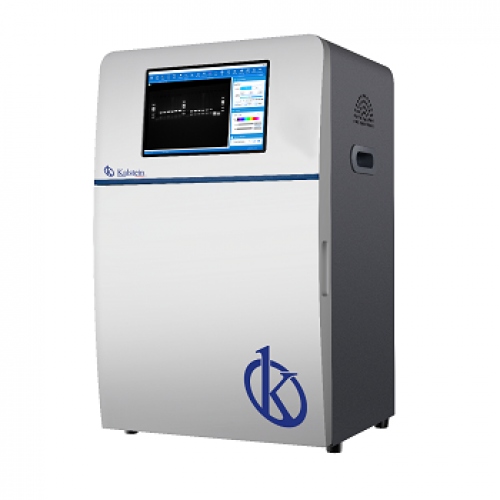The electrophoresis process is a technique where electrical current is applied to biological molecules, the process consists of separating depending on whether they are large or smaller and has a wide variety of scientific applications, its use focuses on protein research, genetic research, DNA separation and RNA; this technique is widely used in diagnostic tests, and to understand the function of genes and proteins.
Between the two main types of electrophoresis are capillary electrophoresis, a process that allows DNA separation in shorter pieces; and we have the separation in electrophoresis gels that allows the patterns of A, C, T and G of DNA to be characterized, an example of this is the human genome project, where the two electrophoresis are used, for their difference in the results that are obtained.
Capillary electrophoresis
This is a technique of separation of biomolecules, is the perfect method to separate amino acids, organic acids, inorganic ions, carbohydrates, steroids, thioles, food contaminants, genetic material and some important drugs in the study of molecular diagnostics and clinical laboratory. The advantage is that it requires samples in small quantities and can be done in minutes with a very low standard error.
This electrophoresis has become an indispensable tool in science and modern medicine, making known the sequence of the human genome, allowing understanding DNA sequencing in an automatic process, this process of capillary electrophoresis has improved knowledge of multifactorial disease, it has been possible to determine the genetic causes of many diseases, strengthening diagnosis and replacing many of the classic methodologies for the study of genomic medicine.
Medical applications of capillary electrophoresis (EC)
This technique is widely used in the area of genomic and pharmaceutical research, has been slowly expanding to molecular and clinical diagnosis with satisfactory results, in addition to applications in the forensic area, offers a saving in time consumption and a low cost per test using this method; There are several types of CD, each of them has a process that gives answers to different tests.
Because it is an analytical technique allows the separation and quantification of analytes such as ions, peptides, proteins, carbohydrates, steroids, nucleic acids, vitamins, drugs and cells; its method is based on the differential migration of molecules subject to an electric field by means of a very small capillary, and favor the presence of specific analytes.
Gel electrophoresis
It is a method used by scientists in order to separate molecules based on parameters such as size, shape or isoelectric point, it is generally used for analytical purposes, however it is also used as a preparatory technique to partially purify molecules before applying mass spectrometry, PCR, cloning or DNA sequencing.
The use of gel electrophoresis consists of the electromotive force that is used to move the molecules through the gel, by placing the molecules in the gel and applying a difference of electrical potential, the molecules move at different speeds, towards the cathode, if positively charged, and towards the anode, if negatively charged.
Scientific applications of gel electrophoresis
The applications of this technique are fundamental in molecular biology, genetics and biochemistry: Gel electrophoresis of large DNA and RNA samples is performed by agarose gels, protein electrophoresis is performed on polyacrylamide-SDS gels, isoelectrofocusing, native gels or two-dimensional electrophoresis.
Gel electrophoresis is one of the most used for the separation of nucleic acids in molecular biology laboratories. It works as follows: the gels are formed by a polymer reticulum and the interstitial liquid in which it is immersed. The pores that possess these gels are of different molecular dimensions, so they delimit the transfer rate and the volume of the molecules during the electrophoretic process, allowing a separation not only by the different charges of the molecules, but by the different sizes of the molecule.
Differences between capillary electrophoresis and gel electrophoresis
Gel electrophoresis requires more time and greater amount of sample, has low efficiency, low capacity of analysis of samples per unit time, differences in the time of migration of molecules and difficulties when interpreting the results, because it is not able to identify all the compounds of a sample. Capillary electrophoresis is a high sensitivity and resolution technique that can be performed in a few minutes and requires small amounts of sample.
Another difference occurs when gel electrophoresis is difficult to automate, so it is very difficult at the time of running multiple samples, instead capillary electrophoresis uses fewer reagents and is automatable. In the case of tests comparing the results obtained by agarose gel electrophoresis and those obtained by capillary electrophoresis it was found that the most suitable to work was capillary electrophoresis due to the speed, sensitivity and safety in the results, without representing a danger to the health of the operators who manipulate the samples and perform the procedure.
If you want to purchase an electrophoresis equipment and you have doubts about which model is best suited to the needs of the research center, be aware to contact the best, this service we can offer you through our online channels and at the best price in the market, also if you want to know the catalog of high-end products that in Kalstein we have for you visit us HERE we assure you that through our online shopping channels that are very easy and viable from anywhere in the world, reminding them that we are Company manufacturer of Laboratory Equipment of high level sale.


